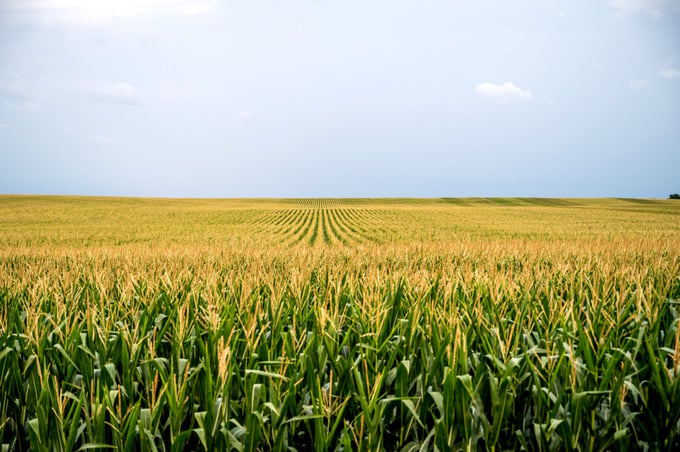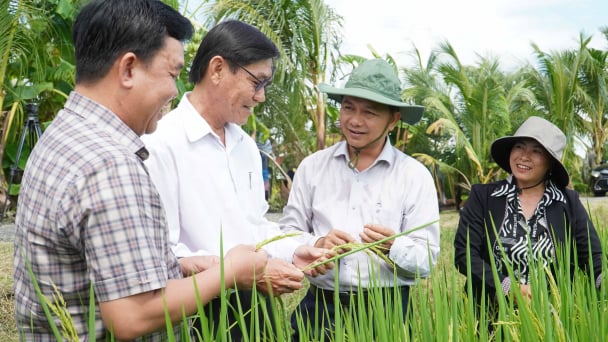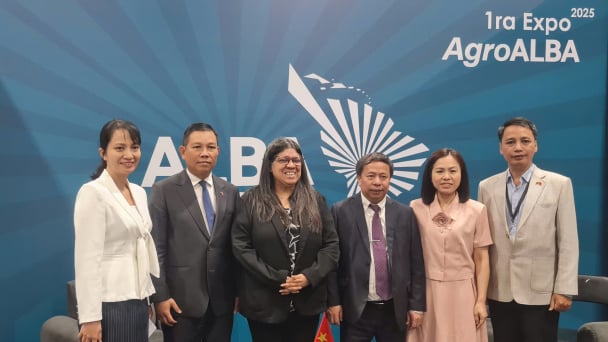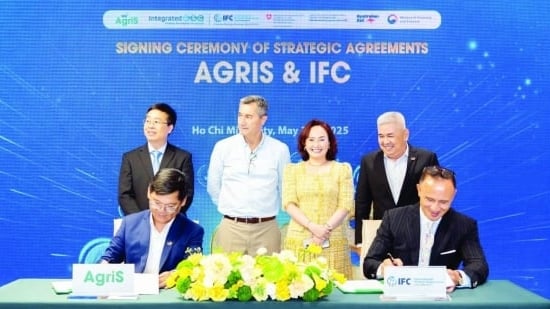June 19, 2025 | 04:08 GMT +7
June 19, 2025 | 04:08 GMT +7
Hotline: 0913.378.918
June 19, 2025 | 04:08 GMT +7
Hotline: 0913.378.918

New app helps farmers record how much nitrogen they are putting on their fields In hopes of reducing overapplication. Photo: Getty Images.
Eleven years ago, Wade Ellwanger began analyzing reports submitted by farmers detailing the amount of fertilizer being applied on cornfields in his area of north-central Nebraska.
What he found was a “shocker” — 91% of farmers were overapplying nitrogen fertilizer to their crops, with some spreading up to 30 pounds more per acre than recommended by agronomists at the University of Nebraska-Lincoln.
That extra nitrogen didn’t result in higher yields, but instead was available to leech into the sandy soils of the region, contaminating groundwater in some areas above recommended healthy levels for human consumption in several areas.
Ellwanger, the general manager of the Lower Niobrara Natural Resources District, turned the revelation into a teaching moment.
The NRD, which is tasked with managing groundwater supplies and its quality, began showing local farmers how much excess fertilizer they were applying as a way to persuade them to reduce their use, save some money and help provide clean drinking water.
It has worked: By 2021, the percentage of local fields that had nitrogen fertilizer applications above recommended levels had dropped to 66%, and the average overapplication had declined to an average of 10 pounds per acre.
“That was good to see,” Ellwanger said. “Over the years we’ve seen a nice declining trend, a very positive trend.”
That data-fueled, educational approach used by the Lower Niobrara NRD is now being spread statewide.
This fall, the Nebraska Association of Resources Districts launched a computer app for farmers, called “Producer Connect,” that allows them to more easily report annual levels of fertilizer application and, in turn, allows the NRD association to more easily compile the data and provide feedback.
The app, developed by Scottsbluff-based Longitude 103, shows farmers how their use of nitrogen compares with their neighbors and how it compares with UNL’s recommendations. It also details how much a farmer might save by reducing fertilizer use without cutting yields. It’s savings that could add up to $40 an acre and more.
Seventeen of the state’s 23 NRDs — mainly the ones in the state’s corn growing areas — are participating in what is promoted as a “proactive” step by the state’s farmers and fertilizer suppliers to ensure safe drinking water.
“It’s a giant step,” said Dean Edson, director of the NRD association, in addressing the issue of high nitrate levels in Nebraska’s groundwater.
Nearly one in five public water supplies and private wells in Nebraska consistently test high for nitrate/nitrogen, and that number is growing, according to a report in May from the UNL Institute of Agriculture and Natural Resources. Nitrates washed from fields have been linked to harmful algae blooms in lakes, and nitrates in concentrates above 10 parts per million have been linked to various cancers and “blue baby syndrome” in newborns.
The nitrate problem, officials say, was caused by decades of overapplication of nitrogen fertilizer and will take decades to reverse.
But Ellwanger said that nitrate levels in some areas in his NRD, which covers Boyd County and parts of Holt, Knox, Rock and Keya Paha Counties, have leveled off and some have shown slight declines in recent years.
Edson said that’s also happened in some areas of the central Platte River valley, which has had a similar nitrogen fertilizer monitoring program due to high nitrate levels in groundwater.
“We’re making some improvements, but it’s going to take a while,” he said. “We’re not going to get it cleaned up overnight.”
Edson said that both farm groups and providers of fertilizer have provided funds for the estimated $150,000 to $175,000 cost to develop the app and the expected $30,000 a year expense to maintain it.
In areas with high nitrate levels, farmers were already required to provide yearly reports on their fertilizer use, he said. The app allows those reports to be made more easily, Edson said, and allows quick analysis of the data. Farmers will be shown how their fertilizer application compares with that of others farmers in the area, and the expected cost savings if less nitrogen was applied.
“The key thing is the economics,” he said. “They will see how much dollar savings they will get and still get the same yields.”
Ellwanger said some farmers can save up to $88 an acre in input costs by reducing fertilizer applications, improving soil health via practices like cover crops, and better timing irrigation.
But changing farming practices takes time, Edson said. Some farmers still follow practices of their fathers and grandfathers, and when crop prices rise, there’s a tendency to apply more fertilizer. But, he said, the use of cover crops to improve soil health is spreading, and fewer farmers are applying fertilizer in the fall, a practice shown to be wasteful.
The Nebraska Legislature is also getting involved in trying to reduce nitrate levels in groundwater.
Earlier this year, lawmakers passed Legislative Bill 1368, or the Nitrogen Reduction Incentive Act. The act provides financial incentives of up to $15 an acre to farmers who reduce commercial fertilizers used by the lesser of 40 pounds per acre or 15%. The bill was originally proposed to provide $5 million annually in total incentives, but it was pared back to provide just $1 million.
LB 1368 generated a lot of interest, Ellwanger said, but it’s only a start. Hopefully, he said, the program will continue and additional funding can be found.
nebraskaexaminer
/2025/06/17/3942-2-143243_548.jpg)
(VAN) Recently, in Sweden, the Secretary of the Binh Dinh Provincial Party Committee presented the Investment Registration Certificate for the 'Polyester Fabric Recycling Complex' project to SYRE Impact-AB Company.
/2025/06/12/3721-2-202745_83.jpg)
(VAN) TH made an impression at Seoul Food 2025 with its line of natural beverages, paving the way for Vietnamese food products to enter the South Korean market.

(VAN) Soc Trang's success in rice exports stems from a strategy of developing fragrant and specialty rice cultivation areas and standardizing production toward low-emission practices.
/2025/06/11/1311-5-120811_839.jpg)
(VAN) The pig farming industry is facing the challenge of comprehensive restructuring to meet requirements for quality, safety, traceability, and market expansion both domestically and for export.

(VAN) Vietnam considers participating in ALGROALBA in order to expand agricultural production, coordinate the assessment and effective exploitation potential land.
/2025/06/05/5314-1-184727_407.jpg)
(VAN) From seemingly worthless fish scales and skin, enzymes and lactic ferments can transform by-products into peptides, opening a sustainable, effective business direction and elevating Vietnamese seafood.

(VAN) TTC AgriS and IFC signed a strategic partnership to develop a sustainable agricultural value chain, aiming to achieve the Net Zero target by 2035.